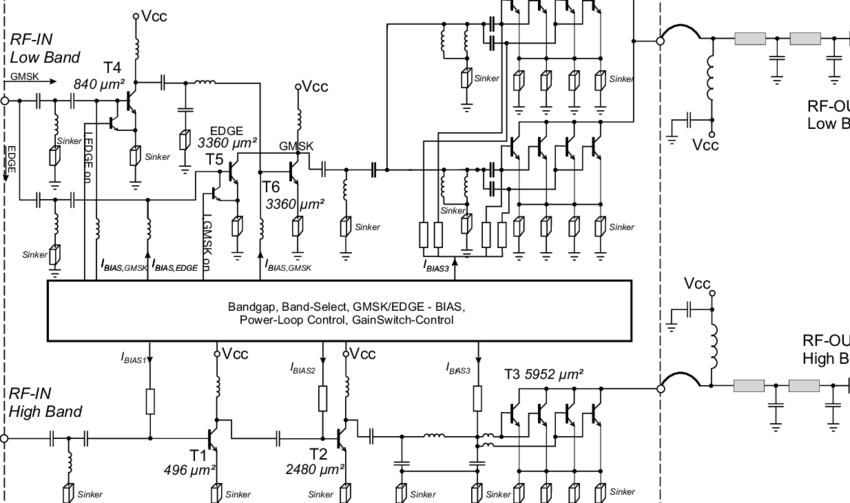Time: 2024-09-13 13:56:09View:
Integrated amplifiers have revolutionized audio systems by combining preamplifier and power amplifier functions into a single, efficient unit. This comprehensive guide explores the design, technology, and applications of integrated amplifiers, catering to both audio enthusiasts and professionals.
An integrated amplifier is a device that combines a preamplifier and a power amplifier in one chassis. This integration offers several benefits:

Integrated amplifiers combine the preamplifier and power amplifier sections into a single unit, offering a streamlined audio solution. Understanding the architecture of these devices is crucial for appreciating their functionality and performance.
The preamplifier is responsible for signal selection, initial amplification, and control functions.
This section is responsible for amplifying the audio signal to a level sufficient to drive speakers.
Understanding these parameters is crucial for evaluating integrated amplifiers:
| Parameter | Description | Typical Range |
|---|---|---|
| Power Output | Measured in watts per channel | 20W - 200W |
| Total Harmonic Distortion (THD) | Measure of audio signal distortion | <0.1% |
| Signal-to-Noise Ratio (SNR) | Ratio of signal level to noise level | >80dB |
| Frequency Response | Range of frequencies the amplifier can reproduce | 20Hz - 20kHz (±3dB) |
A higher SNR indicates cleaner audio reproduction with less background noise.
| Aspect | Integrated Amplifiers | Separate Components |
|---|---|---|
| Space Efficiency | High | Low |
| Cost | Generally lower | Often higher |
| Flexibility | Limited | High |
| Performance | Good to Excellent | Potentially Superior |
| Ease of Setup | Simple | More Complex |
Integrated amplifiers find use in various settings:
John, an audiophile, replaced his separate preamp and power amp with a high-end integrated amplifier. Benefits he experienced:
The future of integrated amplifiers looks promising with advancements in:
Integrated amplifiers offer a compelling solution for many audio enthusiasts and professionals, balancing performance, convenience, and cost-effectiveness. As technology advances, we can expect even more features and improved sound quality from these versatile devices.
1. Are integrated amplifiers good for audiophiles?
Yes, many high-end integrated amplifiers offer excellent sound quality suitable for audiophiles, while providing the convenience of an all-in-one solution. These models often feature premium components, advanced circuit designs, and sophisticated features like digital signal processing to deliver a high-fidelity audio experience. However, some audiophiles may still prefer separate preamplifier and power amplifier components for maximum flexibility and performance.
2. Can I use an integrated amplifier with any speakers?
Generally, yes, but it's important to match the amplifier's power output and impedance specifications with your speakers for optimal performance. Mismatched impedances or underpowered amplifiers can lead to poor sound quality, distortion, or even damage to the speakers. When choosing an integrated amplifier, consider the efficiency and impedance of your speakers, as well as the amplifier's power rating and damping factor, to ensure a compatible and well-performing system.
3. How long do integrated amplifiers typically last?
With proper care and maintenance, a quality integrated amplifier can last 10-20 years or more. Factors that influence the lifespan include build quality, component selection, thermal management, and usage patterns. Regular cleaning, avoiding overheating, and following the manufacturer's recommended maintenance schedule can help extend the operational life of an integrated amplifier. However, advancements in technology may lead some users to upgrade their integrated amplifiers sooner to take advantage of newer features and performance improvements.
4. Do integrated amplifiers require a warm-up period?
The need for a warm-up period varies depending on the amplifier design. Tube-based integrated amplifiers often benefit from a brief warm-up time, typically 10-30 minutes, to allow the vacuum tubes to reach their optimal operating temperature and stability. This can help minimize noise and distortion during the initial power-on phase. Solid-state integrated amplifiers, on the other hand, generally do not require a dedicated warm-up period and can be used immediately after power-on, as the electronic components reach operating temperature quickly.
5. Can I upgrade the components in an integrated amplifier?
The ability to upgrade individual components in an integrated amplifier is often limited, as the design is optimized for a specific configuration. Some high-end models may offer modular designs or user-replaceable components, such as DACs or output stages, to allow for future upgrades. However, in most cases, upgrading an integrated amplifier typically involves replacing the entire unit, rather than swapping out individual parts. The degree of upgradeability depends on the specific model and the manufacturer's design approach.
6. How do I know if an integrated amplifier is powerful enough for my speakers?
When selecting an integrated amplifier, you should consider the power requirements of your speakers. Key factors include the speaker's impedance (typically 4-8 ohms) and sensitivity (measured in dB/W/m). An amplifier's power output, measured in watts, should be matched to the speakers' needs. As a general rule, the amplifier's power output should be at least twice the speaker's power handling capacity to provide sufficient headroom and dynamic range. It's also important to account for the size of the listening room, as larger spaces may require more powerful amplification.
7. What is the difference between an integrated amplifier and a receiver?
While both integrated amplifiers and receivers combine preamplifier and power amplifier functions, the primary distinction is the inclusion of additional features in a receiver: